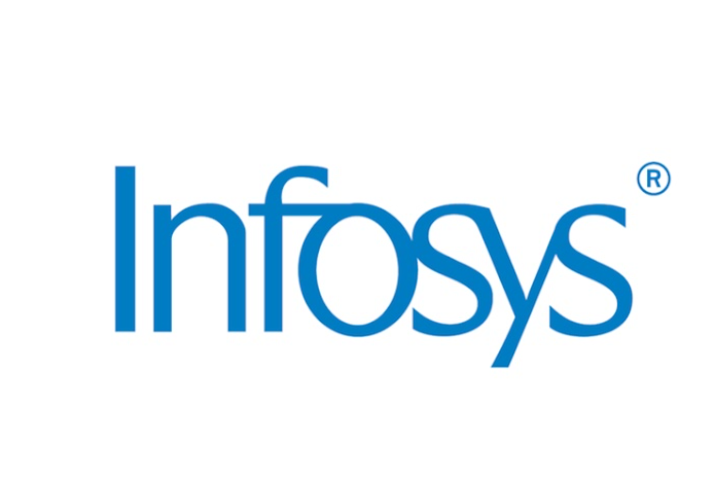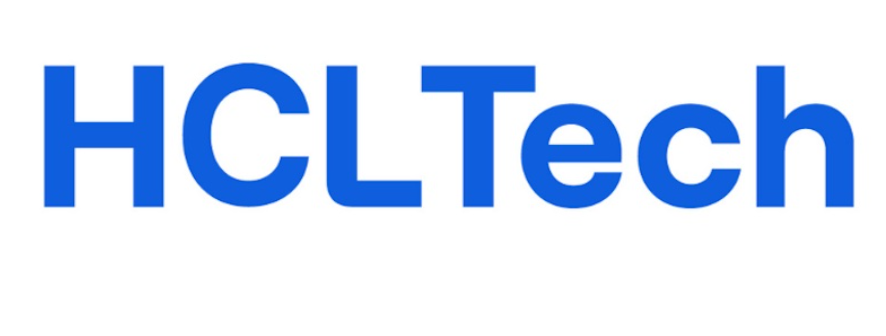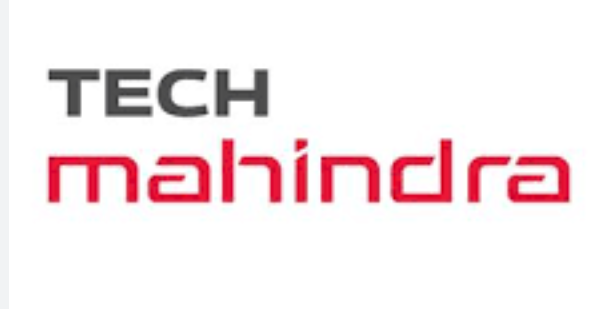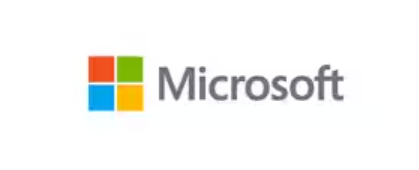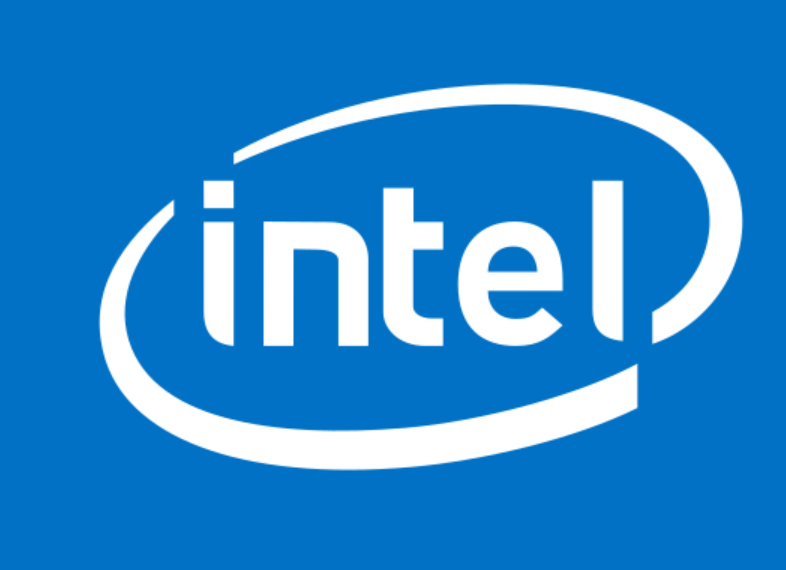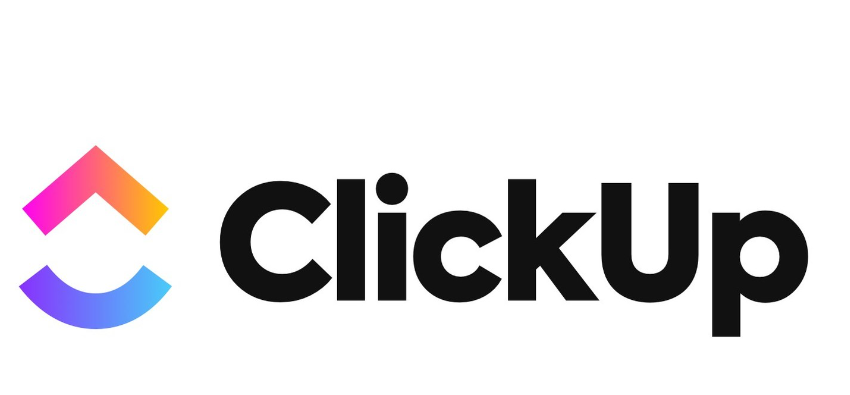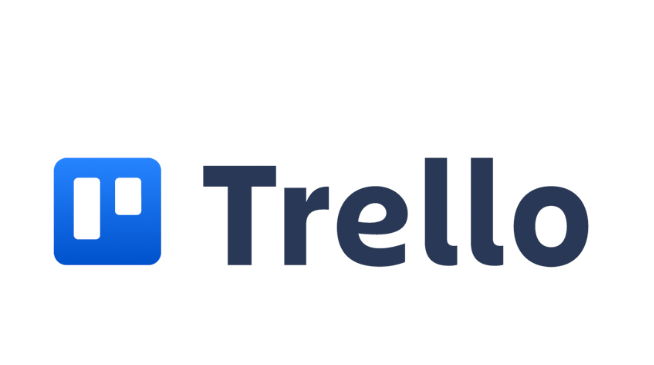In today’s digital age, cybersecurity has become an essential skill. With the increasing reliance on technology, the demand for cybersecurity professionals is higher than ever before. Whether you’re looking to start a career in cybersecurity or enhance your existing skills, enrolling in online courses can be a convenient and effective way to achieve your goals. In this article, we’ll explore the ten top cybersecurity online courses that can help you stay ahead in the ever-evolving field of cybersecurity.
1. Cybersecurity Analyst Professional Certificate (IBM)
Course Name: Cybersecurity Analyst Professional Certificate
Provider: IBM
Description: IBM’s Cybersecurity Analyst Professional Certificate is a comprehensive program designed to equip individuals with the skills and knowledge needed to excel in the role of a cybersecurity analyst. This program is particularly beneficial for those who want to enter the field of cybersecurity or enhance their existing cybersecurity expertise.
Key Features:
- Practical Skill Development: The program focuses on hands-on learning, allowing students to gain practical experience in various aspects of cybersecurity. This includes threat detection, incident response, and network security.
- Real-World Scenarios: The curriculum often includes real-world cybersecurity scenarios, enabling students to apply their knowledge in situations that mimic actual cyber threats and attacks.
- Technical Tools and Resources: Participants typically have access to a variety of cybersecurity tools and resources commonly used in the industry. This provides a more immersive learning experience.
- Comprehensive Curriculum: The program covers a wide range of topics relevant to cybersecurity analysts. These may include intrusion detection, security monitoring, vulnerability assessment, and security incident management.
- Industry-Recognized: Completion of the Cybersecurity Analyst Professional Certificate from IBM is a valuable credential that can enhance your employability and demonstrate your expertise to potential employers.
Target Audience:
- Aspiring cybersecurity professionals who want to pursue a career as a cybersecurity analyst.
- IT professionals looking to transition into the cybersecurity field.
- Current cybersecurity practitioners seeking to deepen their knowledge and skills.
Benefits:
- Career Advancement: Completing this certificate program can open doors to a variety of cybersecurity roles, including cybersecurity analyst, incident responder, and security operations center (SOC) analyst.
- In-Demand Skills: The skills and knowledge acquired in this program align with the current demands of the cybersecurity job market, making graduates highly employable.
- Hands-On Experience: The program’s emphasis on practical experience ensures that students are well-prepared to handle real-world cybersecurity challenges.
- IBM Expertise: Learning from IBM, a renowned technology and cybersecurity leader, provides an added layer of credibility to the program.
Duration: The duration of the program can vary but often spans several weeks to a few months, depending on the pace at which the student progresses through the coursework.
Prerequisites: While specific prerequisites may vary, a foundational understanding of IT and basic computer networking concepts is often recommended. Some prior exposure to cybersecurity concepts can be helpful but is not always required.
Certification: Upon successful completion of the Cybersecurity Analyst Professional Certificate program, students typically receive a certificate from IBM, which can be showcased on their resume and LinkedIn profile.
Conclusion: IBM’s Cybersecurity Analyst Professional Certificate offers a comprehensive and practical approach to cybersecurity education. It equips individuals with the skills and knowledge needed to excel in the role of a cybersecurity analyst and provides a valuable credential recognized by the industry. Whether you are just starting your cybersecurity journey or looking to advance your career, this program can be a valuable investment in your professional development.
2. Cybersecurity Professional Certificate (Google)
Cybersecurity Professional Certificate (Google)
Description: Google’s Cybersecurity Professional Certificate is a comprehensive online program designed to equip learners with the essential skills and knowledge required for a career in cybersecurity. This certificate program is part of Google’s commitment to helping individuals develop in-demand skills for the technology job market.
Course Content:
- Introduction to Cybersecurity: The program typically starts with an introduction to the fundamentals of cybersecurity, including understanding the cyber threat landscape, common vulnerabilities, and basic security concepts.
- Network Security: This section covers topics related to securing networks, including firewalls, intrusion detection systems, and network segmentation.
- Cryptography: Learners delve into the world of cryptography, learning about encryption algorithms, digital signatures, and secure communication protocols.
- Security Architecture: Understanding the architecture of secure systems is crucial. This section explores security models, access control, and secure system design principles.
- Identity and Access Management: Managing identities and controlling access to systems and data are central to cybersecurity. This module teaches learners about authentication, authorization, and identity management.
- Security Operations and Incident Response: In this section, students learn about security operations, including monitoring, incident detection, and incident response procedures.
- Security Policy and Governance: Understanding the importance of security policies and governance is vital in any cybersecurity role. This module covers policy creation, compliance, and risk management.
Learning Experience:
- Hands-On Labs: The program often includes hands-on labs and projects, allowing learners to apply their knowledge in practical scenarios.
- Real-World Scenarios: Google incorporates real-world cybersecurity scenarios to give learners a taste of what working in the field is like.
- Flexible Online Learning: Being an online program, it offers flexibility, allowing learners to study at their own pace.
- Career Support: Google may offer career support resources, including job search assistance and networking opportunities.
Who It’s For:
- Individuals looking to start a career in cybersecurity.
- Career changers who want to transition into the field of cybersecurity.
- Those seeking foundational knowledge and practical skills in cybersecurity.
Certification:
Upon successful completion of the program, learners receive a Google Career Certificate, which can be added to their resume and LinkedIn profile. This certification can be a valuable asset when applying for cybersecurity positions.
Why Choose This Program:
- Industry-Backed: The program is developed by Google, a leading tech company, making it highly credible in the tech industry.
- Practical Focus: It emphasizes practical skills and knowledge that are directly applicable to real-world cybersecurity roles.
- Flexible Learning: The online format allows learners to balance their studies with other commitments.
- Career Opportunities: With the demand for cybersecurity professionals on the rise, completing this program can open doors to a variety of job opportunities in the field.
Google’s Cybersecurity Professional Certificate provides a comprehensive and practical introduction to the world of cybersecurity, making it an excellent choice for individuals looking to enter this high-demand and dynamic field.
3. Cybersecurity Analyst (Microsoft)
Cybersecurity Analyst (Microsoft)
Description: Microsoft’s Cybersecurity Analyst program is designed to prepare individuals for the role of a cybersecurity analyst. It focuses on developing the skills and knowledge necessary to identify and respond to cybersecurity threats and incidents effectively. This program is part of Microsoft’s broader initiative to provide industry-relevant certifications and training in the field of cybersecurity.
Key Highlights:
- Skill Development: The program emphasizes hands-on skills development in areas such as threat detection, incident response, security monitoring, and security operations. Participants gain practical experience in using cybersecurity tools and technologies commonly used in the industry.
- Real-World Scenarios: The program often incorporates real-world scenarios and case studies to simulate the challenges that cybersecurity analysts face in their roles. This helps learners apply their knowledge to practical situations.
- Microsoft Security Solutions: Participants may have access to Microsoft’s suite of security solutions and tools, which are integrated into the training. This includes tools for threat detection, identity and access management, and more.
- Preparation for Industry Certification: The program is designed to help individuals prepare for industry-recognized certifications, such as CompTIA Security+ or Certified Information Systems Security Professional (CISSP), which can enhance career prospects.
- Flexible Learning: Microsoft offers a variety of learning resources and formats, including online courses, virtual labs, and study materials. This flexibility allows learners to choose the approach that best suits their learning style and schedule.
Who It’s For:
- Aspiring Cybersecurity Analysts: Individuals who are interested in pursuing a career as a cybersecurity analyst and want to acquire the necessary skills and knowledge.
- IT Professionals: IT professionals looking to transition into a cybersecurity role or expand their expertise in cybersecurity.
- Security Enthusiasts: Anyone with a strong interest in cybersecurity and a desire to gain practical experience in the field.
Career Opportunities:
Completion of the Cybersecurity Analyst program from Microsoft can open doors to various career opportunities in the cybersecurity field, including:
- Cybersecurity Analyst: The program is specifically designed to prepare individuals for this role. Cybersecurity analysts are responsible for monitoring and protecting an organization’s IT systems and networks from security threats.
- Security Operations Center (SOC) Analyst: Many cybersecurity analysts work in SOC environments, where they monitor security alerts, investigate incidents, and respond to security breaches.
- Security Consultant: Some graduates may choose to work as security consultants, providing expertise to organizations on improving their security posture.
- Security Administrator: Individuals with the skills gained from this program can pursue roles as security administrators responsible for configuring and maintaining security solutions.
Conclusion:
Microsoft’s Cybersecurity Analyst program provides a valuable learning opportunity for individuals looking to enter the cybersecurity field or advance their careers in this high-demand industry. With a focus on practical skills and real-world scenarios, this program equips participants with the knowledge and expertise needed to excel in roles related to cybersecurity analysis and incident response.
4. The Complete Cyber Security Course (Udemy)
Title: The Complete Cyber Security Course
Platform: Udemy
Description: “The Complete Cyber Security Course” on Udemy is a comprehensive and highly-rated online course that offers in-depth coverage of various aspects of cybersecurity. It is designed to provide learners with practical knowledge and skills to become proficient in cybersecurity and protect digital assets effectively.
Course Content: This course is divided into multiple sections, each covering a specific aspect of cybersecurity:
- Introduction to Cybersecurity: The course begins with an introduction to the fundamentals of cybersecurity, providing a solid foundation for learners.
- Network Security: Learners delve into the world of network security, covering topics such as firewalls, intrusion detection systems, and securing wireless networks.
- Malware and Antivirus: This section explores malware types, their characteristics, and methods for safeguarding systems against malware attacks.
- Online Security and Privacy: Students learn about online security best practices, including securing email accounts, web browsing, and social media profiles.
- Encryption: Encryption is a crucial topic in cybersecurity. This section covers encryption techniques, secure communication, and data protection.
- Security Policies and Procedures: The course delves into security policies and procedures, helping learners understand how to develop and implement effective security policies within an organization.
- Hacking and Intrusion Detection: Students gain insights into ethical hacking, penetration testing, and intrusion detection methods.
- Web Security: This section focuses on web security, covering topics such as secure web browsing, web application security, and secure web development practices.
- WiFi Security: Learners explore WiFi security vulnerabilities and techniques for securing wireless networks.
- Denial of Service Attacks: Denial of Service (DoS) attacks are explained, along with mitigation strategies.
- End-User Security: This section emphasizes the importance of end-user security awareness and best practices.
- Mobile Security: Mobile devices are a common target for cyberattacks. This section covers mobile security threats and protection measures.
- Password Managers: Password management is a critical aspect of cybersecurity. Students learn about password managers and how to use them effectively.
- Router Security: Routers are a key component of network security. This section covers router security settings and configurations.
- Email Security: Email is a common vector for cyberattacks. This section explores email security, phishing, and email encryption.
- Cryptography: The course provides an in-depth understanding of cryptography, encryption algorithms, and digital signatures.
- Incident Response and Recovery: Learners gain knowledge about incident response strategies and recovery plans in the event of a security breach.
Who It’s For:
- Beginners: The course is suitable for beginners who want to start a career in cybersecurity.
- IT Professionals: IT professionals and system administrators seeking to enhance their cybersecurity skills and knowledge.
- Small Business Owners: Small business owners looking to secure their digital assets and sensitive data.
Instructor: The course is often led by an experienced instructor with expertise in cybersecurity. The instructor guides learners through each topic and provides practical examples and demonstrations.
Course Format: The course typically includes video lectures, hands-on exercises, quizzes, and downloadable resources. Learners can progress at their own pace and access the course materials at any time.
Certification: Upon completing the course, some versions may offer a completion certificate that learners can add to their professional profiles.
Reviews and Ratings: This course is often highly-rated by students, with positive reviews highlighting its comprehensive content and practical approach to cybersecurity.
“The Complete Cyber Security Course” on Udemy is a valuable resource for anyone looking to gain a strong understanding of cybersecurity principles and practices. It covers a wide range of topics, making it suitable for beginners and those with some prior knowledge in the field. Students can acquire practical skills that are essential for securing digital assets and protecting against cyber threats.
5. Introduction to Cyber Security (FutureLearn)
Course Title: Introduction to Cyber Security
Description: The “Introduction to Cyber Security” course on FutureLearn is designed to provide learners with a foundational understanding of cybersecurity concepts, principles, and practices. It serves as an excellent starting point for individuals who are new to the field of cybersecurity and want to explore the essential aspects of protecting digital assets and information.
Course Content: The course typically covers a range of topics, including but not limited to:
- Cyber Threats: Learners will be introduced to various types of cyber threats, such as malware, phishing, ransomware, and social engineering. They will gain insights into how these threats operate and the potential risks they pose.
- Risk Assessment: Understanding risk is fundamental in cybersecurity. Participants will learn how to assess and analyze cybersecurity risks, identifying vulnerabilities and potential weaknesses in systems.
- Security Measures: The course covers basic security measures and best practices, including password management, access control, encryption, and secure communication.
- Cybersecurity Policies: Learners will explore the importance of cybersecurity policies and how they contribute to an organization’s security posture. This may include topics like data protection and compliance with regulations.
- Security Awareness: Building a cybersecurity-aware culture is crucial. The course may touch on the importance of security awareness training for employees and individuals.
Course Format:
- Online Learning: The course is typically offered as an online learning program, allowing participants to access course materials from anywhere with an internet connection.
- Self-Paced: Learners can often complete the course at their own pace, which makes it accessible to individuals with busy schedules.
- Interactive Content: FutureLearn courses often include interactive elements such as quizzes, discussions, and practical exercises to reinforce learning.
- Certification: Depending on the course provider, participants may have the opportunity to earn a certificate of completion, which can be a valuable addition to their resume.
Who It’s For:
- Beginners: This course is ideal for individuals who are new to cybersecurity and want to build a strong foundational knowledge of the subject.
- General Audience: It is suitable for a broad audience, including students, professionals from various fields, small business owners, and anyone interested in understanding the basics of cybersecurity.
Course Provider: FutureLearn is a leading online learning platform that partners with universities and institutions worldwide to offer a wide range of courses on various subjects. The platform is known for its high-quality educational content and interactive learning experience.
Conclusion: The “Introduction to Cyber Security” course on FutureLearn is a valuable resource for individuals looking to start their journey into the field of cybersecurity. By providing foundational knowledge and practical insights, it equips learners with the essential skills needed to better protect digital assets and navigate the evolving landscape of cyber threats.
6. AWS Certified Security Specialty (Udemy)
AWS Certified Security Specialty (Udemy)
Description: The “AWS Certified Security Specialty” course on Udemy is a comprehensive online training program designed to prepare individuals for the AWS Certified Security Specialty certification exam. AWS (Amazon Web Services) is one of the leading cloud service providers globally, and this certification focuses specifically on security within the AWS environment.
Course Content:
- AWS Security Services: The course covers various AWS security services and features, including AWS Identity and Access Management (IAM), AWS Key Management Service (KMS), AWS Web Application Firewall (WAF), and more.
- Security Best Practices: Students learn AWS security best practices and how to implement them to secure their AWS infrastructure effectively.
- Identity and Access Management: The course delves into IAM, including creating and managing users, groups, roles, and policies to control access to AWS resources.
- Data Protection: It covers data encryption, both in transit and at rest, using AWS services like KMS and S3 encryption.
- Network Security: Students learn about AWS Virtual Private Cloud (VPC), network ACLs, security groups, and other networking features to secure their AWS environments.
- Compliance and Governance: The course discusses AWS compliance programs and how to monitor and audit AWS resources to maintain compliance.
- Incident Response: It covers incident detection and response strategies, including the use of AWS CloudWatch and AWS CloudTrail for logging and monitoring.
- Security Assessment: Students will understand how to assess their AWS environments for security vulnerabilities and risks.
Who It’s For: This course is suitable for a range of individuals, including:
- AWS professionals seeking to specialize in AWS security.
- Security professionals looking to expand their knowledge to the AWS cloud.
- IT professionals responsible for the security of AWS infrastructure.
- Those preparing for the AWS Certified Security Specialty certification exam.
Instructor: The course is typically led by an experienced AWS professional or instructor who holds relevant certifications and has hands-on experience in AWS security.
Format: The course on Udemy is usually delivered through video lectures, hands-on labs, quizzes, and practice exams. It allows learners to study at their own pace, making it suitable for individuals with varying levels of experience.
Certification Exam: After completing the course, students are well-prepared to take the AWS Certified Security Specialty certification exam, which is recognized as a valuable credential in the cloud security industry.
Course Benefits:
- Provides in-depth knowledge of AWS security services and best practices.
- Helps individuals gain practical skills in securing AWS environments.
- Prepares students for a widely recognized certification that can enhance their career prospects.
- Offers flexible, self-paced learning options.
Before enrolling in the course, it’s essential to check the course reviews, instructor credentials, and any prerequisites to ensure it aligns with your career goals and skill level.
7. Cyber Aces (Sans Institute)
Cyber Aces (SANS Institute)
Description: Cyber Aces is a cybersecurity training program provided by the SANS Institute, a globally recognized leader in cybersecurity education and research. The program is designed to offer high-quality, accessible cybersecurity training to individuals interested in learning about various aspects of the field.
Key Features:
- Free Training: One of the standout features of the Cyber Aces program is that it provides free cybersecurity training. This makes it an accessible option for individuals who want to explore the world of cybersecurity without significant financial barriers.
- Multiple Courses: Cyber Aces typically offers a range of courses covering various cybersecurity topics. These courses are designed to cater to individuals at different skill levels, from beginners to more experienced learners. Some common topics covered include network security, penetration testing, digital forensics, and cybersecurity fundamentals.
- Hands-On Labs: Hands-on experience is crucial in cybersecurity education. Cyber Aces often includes practical lab exercises and simulations, allowing students to apply the knowledge they acquire in real-world scenarios. This hands-on approach helps learners develop practical skills and gain confidence in tackling cybersecurity challenges.
- Digital Resources: In addition to live courses and hands-on labs, Cyber Aces may provide digital resources such as reading materials, video lectures, and interactive quizzes. These resources complement the learning experience and allow students to study at their own pace.
- Competitions and Challenges: Cyber Aces frequently hosts cybersecurity competitions and challenges, providing students with opportunities to test their skills in a competitive environment. These challenges can be a fun way to apply what has been learned and gain recognition for proficiency in specific areas of cybersecurity.
Who It’s For:
- Beginners: Cyber Aces is an excellent choice for individuals who are new to cybersecurity and want to build a solid foundation in the field.
- Explorers: It’s also suitable for those who are curious about cybersecurity and want to explore various aspects of the discipline without committing to a full-fledged paid course.
- Students and Enthusiasts: Students studying computer science or related fields and cybersecurity enthusiasts can benefit from the program by gaining practical experience and expanding their knowledge.
- Professionals Seeking Skill Enhancement: Even experienced IT professionals looking to enhance their cybersecurity skills can find value in Cyber Aces’ free training resources and competitions.
Conclusion:
Cyber Aces, provided by the SANS Institute, offers accessible and high-quality cybersecurity training for a wide range of learners. Its combination of free courses, hands-on labs, and competitive challenges makes it a valuable resource for individuals looking to start their cybersecurity journey or further their expertise in this critical field. Whether you’re a beginner or an experienced professional, Cyber Aces provides an opportunity to expand your cybersecurity knowledge and skills.
8. IT Security: Defense against the digital dark arts (Google)
Course Title: IT Security: Defense against the Digital Dark Arts
Provider: Google
Description:
Google’s “IT Security: Defense against the Digital Dark Arts” is an online course that focuses on equipping learners with essential knowledge and skills to defend against various cyber threats and protect digital assets. The course is designed to provide a foundational understanding of IT security, making it suitable for individuals new to the field.
Course Content:
- Introduction to Cybersecurity: The course begins with an introduction to the world of cybersecurity, explaining the importance of security in the digital age.
- Understanding Malware: Learners will delve into the world of malware, including viruses, Trojans, worms, and how they can compromise computer systems.
- Network Security: This section covers the basics of network security, including firewalls, intrusion detection systems, and secure network configurations.
- Cryptography: Cryptography is a fundamental aspect of cybersecurity. The course introduces learners to encryption, decryption, and cryptographic protocols used to secure data.
- Authentication and Access Control: Topics related to user authentication, access control mechanisms, and the importance of strong passwords are explored.
- Security Policies and Procedures: Learners will gain insights into the development and implementation of security policies and procedures to safeguard digital assets.
- Security in Practice: Practical aspects of security, such as securing email communications and web browsing, are discussed.
- Cyber Hygiene: Maintaining good cyber hygiene is crucial. This section provides tips on safe online behavior and protecting personal information.
Course Format:
- Duration: The course is typically self-paced, allowing learners to progress at their own speed.
- Content Delivery: It often includes video lectures, readings, quizzes, and practical exercises to reinforce learning.
- Access: Many online courses offered by Google are accessible for free, making them accessible to a wide audience.
Who It’s For:
- Individuals new to the field of cybersecurity who want to establish a foundational understanding of IT security.
- Small business owners and employees looking to enhance their organization’s cybersecurity posture.
- Anyone interested in learning practical strategies for defending against cyber threats in their personal and professional lives.
Benefits:
- Foundational Knowledge: It provides a solid foundation in IT security, making it an excellent starting point for beginners.
- Practical Insights: The course focuses on real-world security practices and offers practical tips for protecting digital assets.
- Free Access: Many courses offered by Google are accessible for free, making quality cybersecurity education more widely available.
Certification:
Google’s IT Security courses typically offer certificates of completion. While these certificates may not be formal certifications like those from professional organizations, they can be valuable for demonstrating foundational knowledge and commitment to IT security.
Conclusion:
Google’s “IT Security: Defense against the Digital Dark Arts” course is an excellent resource for individuals looking to build a foundational understanding of IT security. It covers key concepts, practical tips, and real-world scenarios to help learners defend against cyber threats effectively. Whether you’re a beginner or looking to enhance your cyber hygiene, this course offers valuable insights and knowledge.
9. The Complete Cyber Security Course! (StationX)
Course Title: The Complete Cyber Security Course!
Platform: StationX
Description: “The Complete Cyber Security Course!” is a comprehensive cybersecurity training program available on the StationX platform. This course is designed to equip learners with a deep understanding of cybersecurity concepts and practical skills. It covers a wide range of topics, making it suitable for beginners and intermediate learners looking to enhance their knowledge and expertise in cybersecurity.
Course Content: The course is structured into various sections, each focusing on a specific aspect of cybersecurity. The content typically includes, but is not limited to, the following topics:
- Introduction to Cybersecurity: An overview of the cybersecurity landscape, including common threats and vulnerabilities.
- Network Security: Coverage of network security fundamentals, protocols, and techniques to secure networks from cyber threats.
- Web Application Security: Exploring the security challenges associated with web applications, including security measures to protect against attacks like SQL injection and cross-site scripting (XSS).
- Ethical Hacking and Penetration Testing: Hands-on training in ethical hacking, penetration testing methodologies, and tools used by security professionals to identify vulnerabilities.
- Cryptography: A deep dive into encryption and decryption techniques, cryptographic algorithms, and their role in securing data.
- Wireless Network Security: Understanding the security risks in wireless networks and how to secure Wi-Fi networks effectively.
- Malware Analysis and Defense: Learning about malware types, behavior analysis, and strategies to defend against malware infections.
- Incident Response and Handling: Preparing for and responding to security incidents, including incident detection, analysis, and containment.
- Security Policies and Compliance: Exploring cybersecurity policies, regulations, and compliance frameworks that organizations must adhere to.
- Securing Cloud Environments: Understanding cloud security challenges and best practices for securing data and applications in the cloud.
- Mobile Device Security: Examining the security considerations for mobile devices and mobile app security.
- Identity and Access Management: Managing user identities, access controls, and authentication methods to ensure secure access to resources.
- Security Awareness and Training: Promoting security awareness among employees and providing training to recognize and mitigate threats.
Delivery Method: The course is typically delivered through a combination of video lectures, hands-on labs, practical exercises, and quizzes. Learners may also have access to downloadable resources, tools, and reference materials.
Instructor: The course is often led by an experienced cybersecurity professional or instructor with expertise in the field. They guide learners through the course content, providing valuable insights and real-world examples.
Who It’s For: “The Complete Cyber Security Course!” is suitable for a wide range of learners, including:
- Beginners looking to enter the cybersecurity field.
- IT professionals seeking to enhance their cybersecurity skills.
- Ethical hackers and penetration testers aiming to sharpen their skills.
- Individuals interested in cybersecurity as a hobby or personal interest.
Certification: Completion of the course may lead to a certificate of completion or achievement, depending on the platform’s policies. However, it’s essential to check the specific details regarding certification with StationX.
Course Duration: The duration of the course may vary depending on the specific version or edition of “The Complete Cyber Security Course!” It can range from several hours to several weeks or months, depending on the depth of coverage and the pace of learning.
Prerequisites: While there are often no strict prerequisites for this course, having a basic understanding of computer systems and networking concepts can be beneficial for learners.
Cost: The course may be available for a one-time purchase or through a subscription model, depending on StationX’s pricing structure.
“The Complete Cyber Security Course!” on StationX is a comprehensive and practical learning resource for individuals looking to develop their cybersecurity knowledge and skills. It covers a wide spectrum of cybersecurity topics and provides hands-on experience, making it a valuable choice for those seeking a well-rounded cybersecurity education.
10. Essentials of Cybersecurity Professional Certificate (edX)
Essentials of Cybersecurity Professional Certificate (edX)
Description: The “Essentials of Cybersecurity Professional Certificate” is an online certificate program offered on the edX platform. It is designed to provide learners with a foundational understanding of cybersecurity concepts, best practices, and principles. This program aims to equip participants with the knowledge and skills necessary to begin a career or enhance their existing expertise in the field of cybersecurity.
Course Content:
- Introduction to Cybersecurity: The program typically starts with an introduction to the fundamental concepts of cybersecurity. Learners gain insights into the importance of cybersecurity in today’s digital landscape.
- Security Controls and Risk Management: This section delves into the various security controls and strategies used to mitigate cybersecurity risks. Topics often include access control, encryption, security policies, and risk assessment.
- Incident Response and Management: Participants learn how to effectively respond to cybersecurity incidents, such as data breaches and malware attacks. This includes incident detection, containment, and recovery procedures.
- Security Governance and Compliance: Understanding the governance and compliance aspects of cybersecurity is crucial. The program covers relevant laws, regulations, and industry standards, ensuring that learners are aware of compliance requirements.
- Cybersecurity Best Practices: The course emphasizes industry best practices for securing digital systems and networks. This may include topics like patch management, network security, and secure coding practices.
- Cybersecurity Tools and Technologies: Participants often get exposure to a range of cybersecurity tools and technologies used in the field. This practical knowledge can be valuable for hands-on cybersecurity roles.
Duration: The duration of the program may vary depending on the institution offering it, but it typically spans several weeks or months. Participants can often choose to study at their own pace, making it accessible to working professionals and learners with varying schedules.
Certification: Successful completion of the “Essentials of Cybersecurity Professional Certificate” program typically results in the award of a professional certificate from the institution offering the course. This certificate serves as evidence of the learner’s commitment to cybersecurity education and may be recognized by employers in the field.
Target Audience: This program is suitable for a broad range of individuals, including:
- Aspiring cybersecurity professionals seeking to enter the field.
- IT professionals looking to expand their knowledge of cybersecurity.
- Business professionals interested in understanding cybersecurity for risk management and compliance.
- Anyone with a general interest in cybersecurity and a desire to enhance their digital security knowledge.
Prerequisites: The prerequisites for this program may vary, but it is often designed to be accessible to learners with a basic understanding of IT and computer systems. Some programs may not require prior cybersecurity experience.
Platform: The “Essentials of Cybersecurity Professional Certificate” program is typically hosted on the edX platform, which offers a user-friendly interface, access to course materials, and opportunities for interaction with instructors and fellow learners.
Cost: While the course content may be available for free, obtaining the professional certificate often requires payment. However, financial aid and scholarships may be available to eligible learners.
In summary, the “Essentials of Cybersecurity Professional Certificate” on edX provides a foundational education in cybersecurity, making it an excellent starting point for individuals interested in pursuing a career in this rapidly evolving field. It covers essential topics, provides practical knowledge, and offers a recognized certification upon successful completion.
FAQ
Are online cybersecurity courses as effective as in-person ones?
Online cybersecurity courses can be just as effective as in-person ones, provided they are from reputable institutions and offer hands-on learning opportunities.
Which cybersecurity certification should I pursue first?
It depends on your current knowledge and career goals. CISSP and CompTIA Security+ are popular choices for beginners.
Is ethical hacking a lucrative career option?
Yes, ethical hackers are in high demand, and their skills are well-compensated in the job market.
How long does it typically take to complete a cybersecurity course?
The duration varies depending on the course and your pace of learning. Some courses can be completed in a few weeks, while others may take several months.
What are the prerequisites for advanced penetration testing courses?
Prerequisites vary, but having a solid understanding of networking and basic cybersecurity concepts is usually recommended.

















